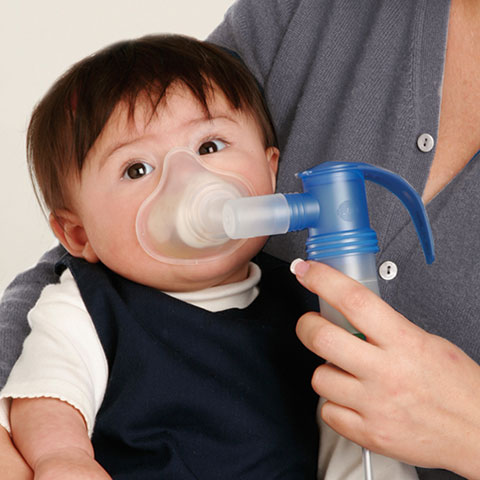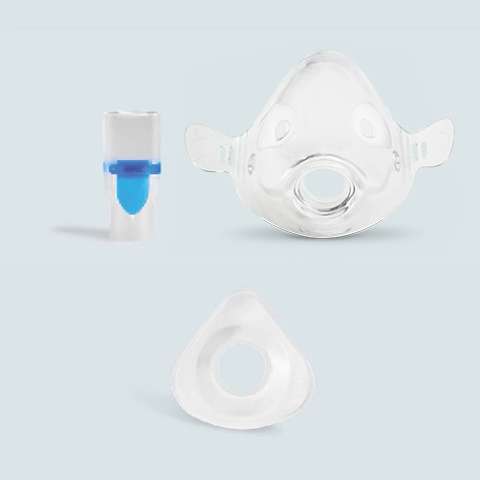
Correct facemask use is important for children on nebulizer therapy.
PARI Baby masks are specifically designed for the low inspiratory flowrates and small tidal volumes of babies and young children. To perform nebulizer therapy with a child, gently hold the mask to the child's face for the entire treatment period. The facemask should fit snugly and the seal maintained throughout nebulizer therapy to ensure adequate amounts of medication reach the lungs. The PARI Baby mask with rotating elbow allows aerosol treatments to be given to small children and babies in almost any position, even while held in the caregiver's arms.
In general, using a nebulizer with a mouthpiece is more efficient than with a facemask. Switching from a facemask to a mouthpiece should be considered by age three. Children younger than age three may have difficulty keeping the mouthpiece in their mouth. When a child is ready to use a nebulizer with a mouthpiece, they should keep their lips tightly around the mouthpiece. It may be helpful for the caregiver to demonstrate to the child how to inhale and exhale slowly while using the nebulizer with mouthpiece. With PARI's nebulizers, it is easy to observe if a child is exhaling correctly through the opening of the valve on the mouthpiece.
In general, children of any age can use a nebulizer for medication delivery to the lungs. Inhaling medications using a nebulizer may be the only way to deliver medications to the small airways of babies and young children. Parents and caregivers should always consult with their child's pediatrician when nebulizer therapy is indicated.

The contents of the PARI Site, such as text, graphics, images, and other material contained on the PARI Site ("Content") are for informational purposes only. The Content is not intended to be a substitute for professional medical advice, diagnosis, or treatment. Always seek the advice of your physician or other qualified health provider with any questions you may have regarding a medical condition. Never disregard professional medical advice or delay in seeking it because of something you have read on the PARI Site!
If you think you may have a medical emergency, call your doctor or 911 immediately. PARI does not recommend or endorse any specific tests, physicians, procedures, opinions, or other information that may be mentioned on the Site. Reliance on any information provided by PARI, PARI employees, others appearing on the Site at the invitation of PARI, or other visitors to the Site is solely at your own risk.
Contact us
Any questions? You can reach a customer service representative at:
804-253-7274
or 1-800-FAST-NEB (327-8632)
If you are looking to buy PARI products in a specific country, please click here
© 2024 PARI Respiratory Equipment, Inc.